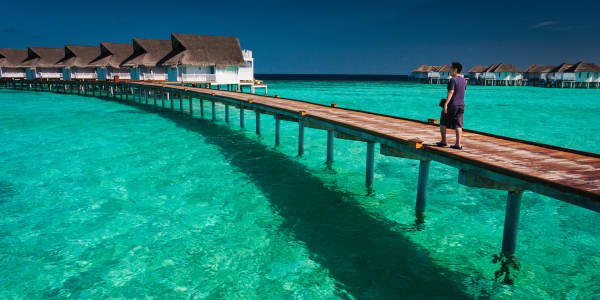China is building infrastructure developments — and relationships — with a number of countries as part of its Belt and Road Initiative (BRI). It's considered the biggest foreign spending program by any one country since the U.S.' Marshall Plan to rebuild post-World War II Europe.
But which projects in this attempt to revive ancient Silk Road trading routes stand to make the most headlines in the coming months? CNBC takes a look.
Pakistan
The China Pakistan Economic Corridor (CPEC) is a partnership between the two Asian neighbors comprising of approximately $60 billion worth of infrastructure developments.
CPEC is the BRI's "most politically contentious, and strategic project," Shailesh Kumar, senior analyst for Asia at Eurasia Group, told CNBC.
He reasoned that CPEC could be a headache for China's rival India given that the program involves Kashmir, disputed territory between India and Pakistan. Kumar added that China's befriending of Pakistan enables it to encircle India, thereby affording it a military advantage.
CPEC's reach is broad and includes developing ports and rail links as well as agriculture, technology and tourism. Chinese Premier Li Keqiang described the two countries as "all-weather strategic cooperative partners," while meeting Pakistani Prime Minister Shahid Khaqan Abbasi in December.
The program is more than just China's way of dealing with overcapacity in cement and steel, explained Daniel de Blocq van Scheltinga, founder and managing partner at Hong Kong-based advisory Polarwide. He added that he "would not be surprised if the relationship develops further," with China's presence in Pakistan's ports serving as a "kind of naval base."
Southeast Asia
There has been a marked shift in China's BRI towards Southeast Asia, Alexious Lee, head of capital access for China at Hong Kong-based capital markets and investment group CLSA, told CNBC. Lee added that the region was an opportunity for China to establish its own "trade ecosystem" in counterpoint to the West's Transatlantic Trade and Investment Partnership.
The building of a Chinese-Thai high speed railway line began in December, following delays which included disputes over design and funding. The full line will be 542 miles long, with trains reaching speeds of over 150 miles per hour. Meanwhile Malaysia, given funding as part of BRI, will unveil four major rail projects in 2018.
Lee added that China would be paying close attention to Southeast Asia in the months ahead, given that it was a "peak period for elections."
Djibouti
China officially opened its military base on the tiny East African state of Djibouti in August of 2017. The move is noteworthy given that the U.S. already has a military presence in the country and the location grants access to the Red Sea and Suez Canal, through which lies access to European markets.
"As China's economic interests expand in Africa, so does the need to protect them," explained Guo Yu, principal China analyst at risk consultancy Verisk Maplecroft. Djibouti is ideal for China "given its strategic location and the fact that China had been using it as a supply base for its anti-piracy operations since 2008," he added.
China will almost certainly want to expand its trade and commercial presence in the Horn of Africa state, de Blocq van Scheltinga added. Chinese President Xi Jinping hosted the Djibouti President Ismail Omar Guelleh in late November, pledging commitment to transport and water supply projects, as well as a liquefied natural gas pipeline.
Central and Eastern Europe
Central and Eastern European countries (CEECs) are "responding more energetically" to the BRI than their Western European neighbours, de Blocq van Scheltinga said.
During a visit by Chinese Premier Li Keqiang to Hungary in November 2017, China completed its full suite of CEECs signed up to the BRI. The alliance is known as 16+1 and of the European constituent includes the Czech Republic, Hungary and Poland.
According to China's state-run news outlet Xinhua, Chinese investment in the bloc has exceeded $9 billion, while the CEECs have in turn spent $1.4 billion on China.
"Improving energy security" is a key tenet of BRI, Yu said. "Securing oil and gas supplies from the ex-Soviet bloc … will help Beijing reduce its reliance on seaborne imports passing through strategic choke points, such as the Strait of Malacca," he explained.
The agreement has sparked some tension between China and the European Union. The latter party is investigating a Budapest-Belgrade railway, a seminal BRI project in the region, for potentially violating financial restrictions on such developments.




